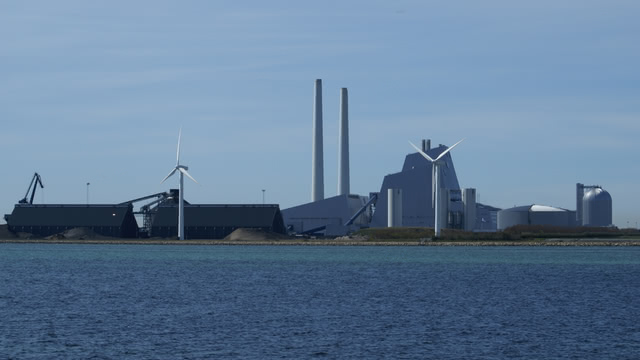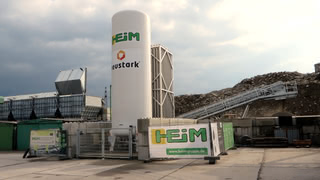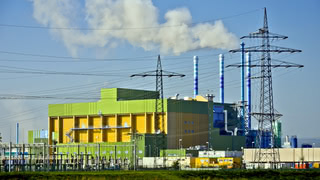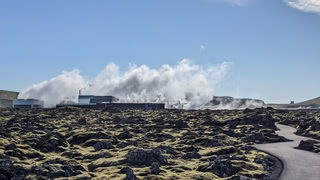Denmark's biomass plants become part of carbon dioxide shipping project
Ørsted plans to ship carbon emissions from two of its biomass-fired power plants in Denmark to the Northern Lights project in Norway.

The Danish energy company Ørsted plans to start the construction of carbon capture units at two of its biomass power plants soon. The emissions will be transported to the Northern Lights project in Norway.
Ørsted plans to establish a hub for carbon emissions near the city of Kalundborg, from where they could be shipped to Norway. Emissions will come from a wood chip-fired power plant in Asnæs near Kalundborg (Asnæsværket) and a straw-fired unit of the Avedøre plant near Copenhagen (Avedøreværket).
Initially, the emissions from Copenhagen will be delivered by truck. In the future, they could be delivered in pipelines. "The realisation of the project will be the first step in establishing a large-scale CO₂ infrastructure across Denmark as the Asnæs Power Station will not only serve as hub for the capture and shipping of Ørsted's own biogenic CO₂, but potentially also for shipping CO₂ produced by other emitters," Ørsted writes in a press release.
From Kalundborg, the carbon dioxide will be shipped to the Northern Lights project in Norway. Plans in Norway are to provide a storage site for emissions from all over Europe. Initial suppliers include a cement plant and a waste-to-energy plant in Norway. The latter was recently put on hold due to cost increases.
Funding from the Danish Energy Agency and Microsoft
The Danish Energy Agency will provide funding for the carbon capture project at the Danish power plants and has entered a 20-year contract with Ørsted. Furthermore, Microsoft will pay Ørsted for carbon removal – it is part of the IT company's plan to become carbon negative.
Ørsted expects the carbon capture units to be operational in 2025; construction will start in June this year. The contract with the Danish Energy Agency involves storing 430,000 tons of carbon dioxide annually.
Bioenergy with carbon capture and storage – often abbreviated BECCS – is one option to deliver negative emissions. In an ideal scenario, biomass-powered plants only emit carbon that the plants took from atmospheric carbon dioxide while growing. However, this calculation comes with some caveats.
CCS was a controversial topic in Denmark around 15 years ago, when Vattenfall planned to implement it at one of its coal-fired power plants in Aalborg in northern Denmark. Those plans received significant resistance and were never implemented.
The debate has shifted, however, with some former critics now carefully supporting CCS. The eco-left party Enhedslisten, which was previously opposed to CCS, has recently supported a climate plan to decarbonize Danish energy and industries that includes CCS.
Enhedslisten notes that the IPCC sees a need to remove carbon dioxide from the atmosphere, but the party warns that CCS should not be used as an excuse to delay other climate initiatives.
Environmental group NOAH is concerned about bioenergy
Some Danish environmentalists still oppose CCS in general. Palle Bendsen from the environmental group NOAH says that concerning bioenergy and CCS, they see that even more critical.
Bendsen tells me that NOAH has become more critical of bioenergy over the years. Denmark uses significant amounts of bioenergy, much of which is imported. Many of Denmark's coal-fired power plants have been converted to use wood chips.
Emissions from burning biomass are usually not accounted for in a country's emission budget, as the carbon in the plants comes from the carbon dioxide they consume while growing. However, growing plants to generate bioenergy can lead to land use changes and other indirect impacts that often lead to a much worse carbon footprint if the full impacts are taken into account.
Update (2025): In August 2025, Ørsted dropped plans for CCS at a third power station, Skærbækværket near Fredericia. However, an Ørsted representative told newspaper Børsen that the two CCS projects mentioned in this article from 2023 are still on track.
The mentioned Northern Lights project in Norway recently performed its first CO₂ injection.
This text was originally published on the shipping news web page Fathom World, which is no longer online. I am republishing my old articles here with minor corrections and updates.
Author: Hanno Böck



